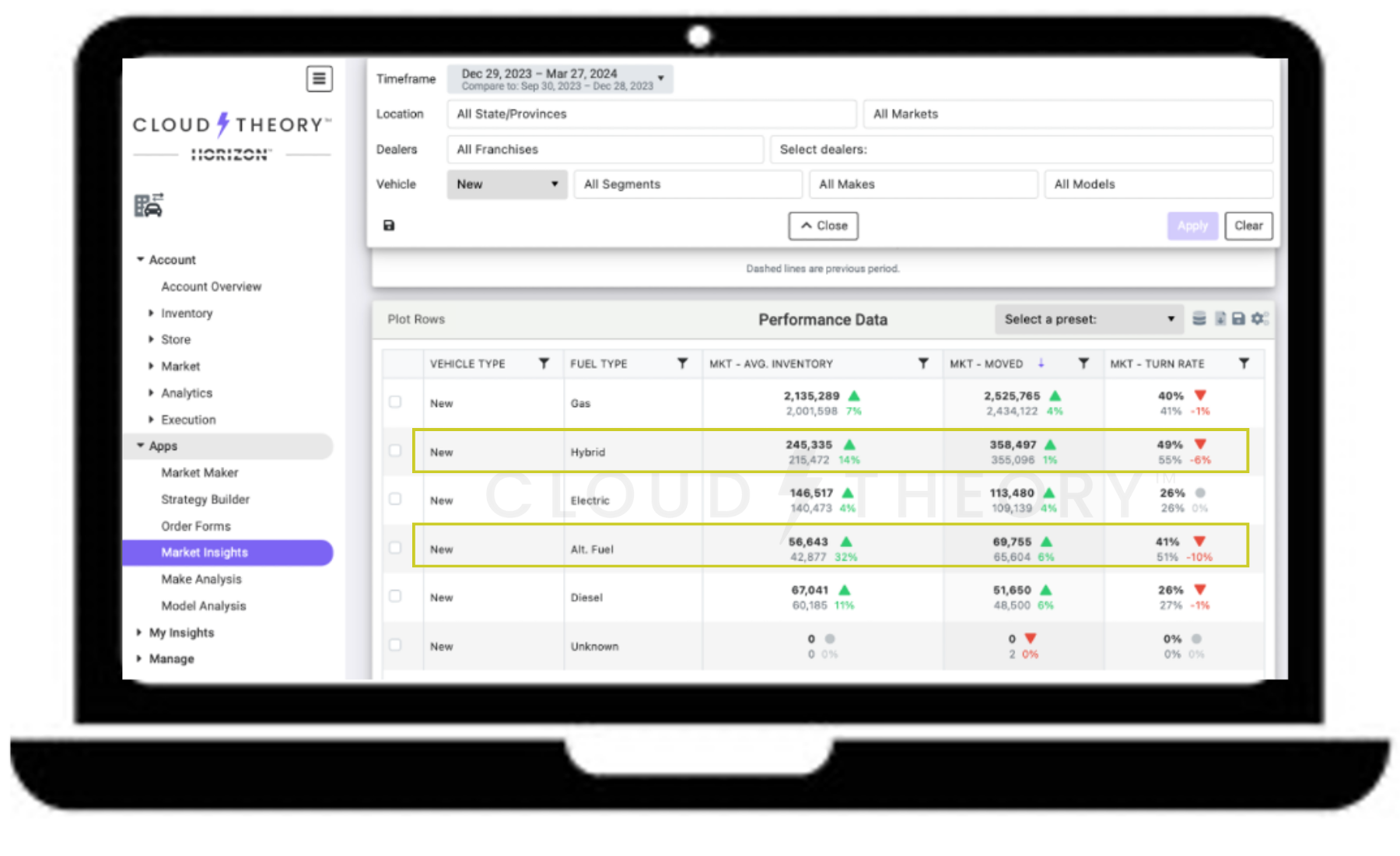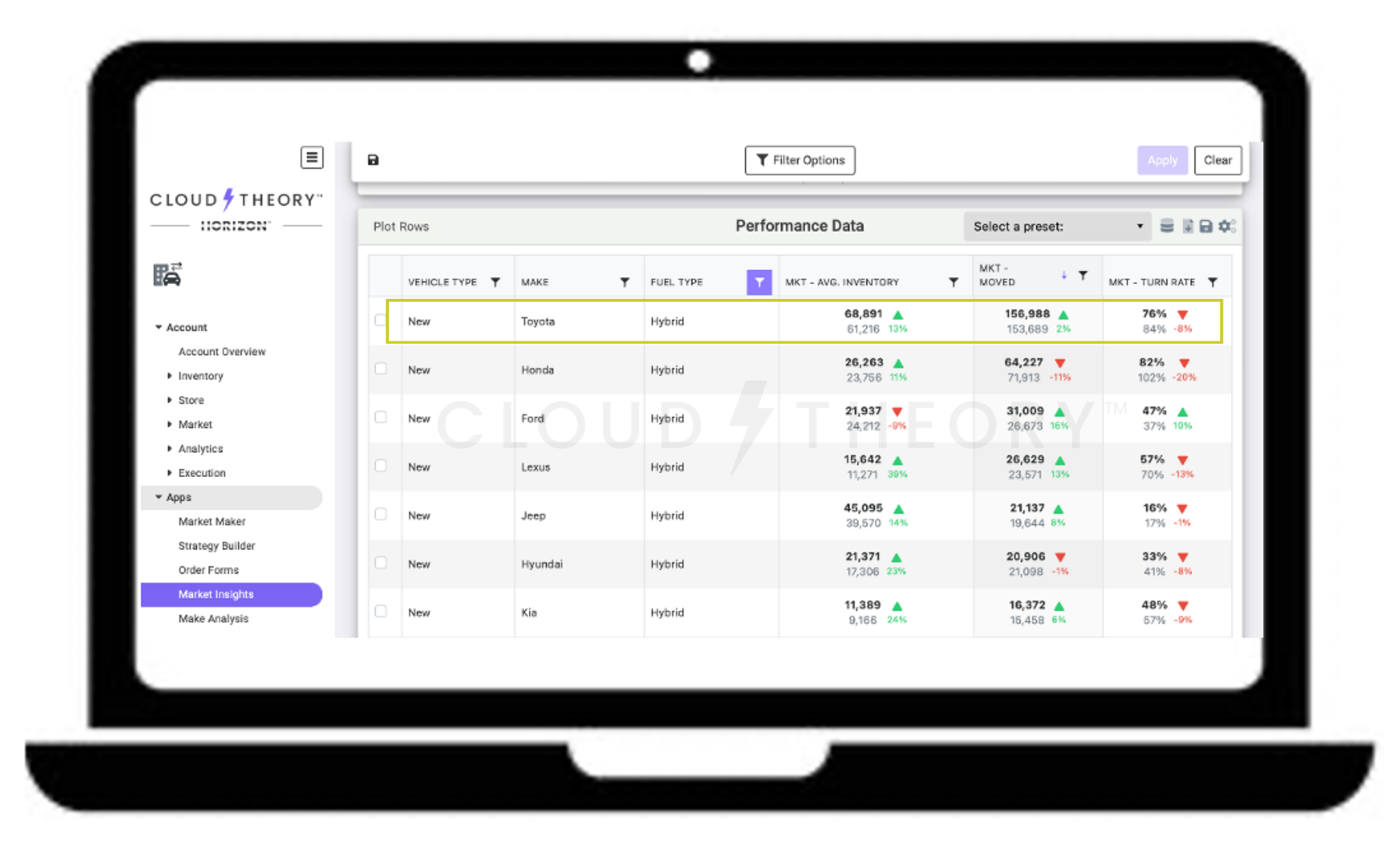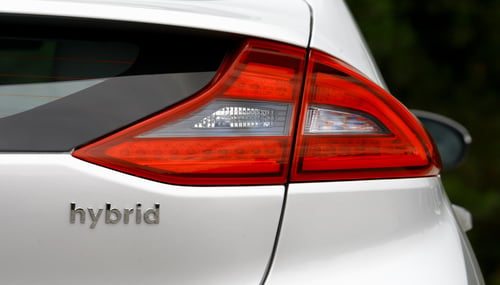Electric vehicles have certainly gotten their share of attention in the last several years. Driven by looming regulatory deadlines, OEMs, parts suppliers, and companies supporting charging infrastructure have all been focused on the future state of the EV revolution and mapping out the next decade to get there. The media has reported extensively on the shifting fortunes in this automotive sector and Cloud Theory has comprehensively monitored and analyzed ongoing trends related to it.
But the road to the revolution has not been without its twists, turns, and rocks in the road. Consumers have demonstrated a relatively widespread reluctance to embrace EVs, and demand has not kept pace with the increasing supply. This has led to significant declines in turn rate and substantial increases in days-to-move over the past year. A recent McKinsey Study indicated that 42% of potential EV buyers do not intend to switch unless battery range and infrastructure improve, indicating that even those interested have skepticism that must be alleviated before more widespread adoption can occur.
With that said, consumers are generally open to eco-friendly options, with a recent Accenture Analysis revealing that 64% consider themselves to be “sustainability-minded” and would prefer their next vehicle to be an alternative to being gas-powered. This sentiment, coupled with the current obstacles in the EV space, positions OEMs with well-developed hybrid offerings to succeed until fully electric capabilities become more mature. With the regulatory picture currently shifting deadlines to reflect a more realistic future state, this interim window of time is likely to get longer. And if there is a change in the White House in favor of the Republicans in 2024, it is almost certain that this timeline will stretch even further.
To put all this into present day context, it is important to look at the relative inventory supply and consumer demand of gas, EV, hybrid, and alternative fuel vehicles. Our Cloud Theory Horizon platform shows that over the last 90 days, hybrid vehicles have outsold EVs by more than a 3-to-1 clip, and the turn rate of these vehicles is the highest of any fuel type and almost double that of EVs (49% vs. 26%).
It is noted that alternative fuel vehicles—hydrogen, biodiesel, and others—are more limited in vehicle movement but are growing rapidly in terms of inventory counts (up 32% quarter-over-quarter), providing yet another avenue for consumers to pursue as an eco-friendly option.

Toyota is the clear leader in hybrids, selling more than double that of #2 Honda, though it is noted that the latter make has the highest turn rate in this sector. And while Ford and Jeep are in the next tier down in terms of vehicle movement (and have lower turn rates), both of these brands have seen double digit percentage increases in the past 90 days. Lexus, Hyundai, and Kia round out the top makes in terms of hybrid sales during that period. It is a given that EVs will continue to receive a huge amount of attention and investment. And whether it takes 10 years or 20 until they become much more mainstream, it is also a given that they will account for a substantially larger percentage of industry supply and demand.
It is a given that EVs will continue to receive a huge amount of attention and investment. And whether it takes 10 years or 20 until they become much more mainstream, it is also a given that they will account for a substantially larger percentage of industry supply and demand.
In the interim, hybrids provide a bridge solution by satisfying the desires of consumers to be more eco-friendly. OEMs would be wise to pay attention to this fuel-type, and to strike the right balance between the hybrid-oriented present and the more EV-oriented future.
About Cloud Theory’s Horizon Platform
Cloud Theory’s Horizon platform provides the level of detail needed for OEMs to survive and thrive in an environment of Hybrids and other EV alternatives. Horizon is a powerful automotive data solution designed to present an OEM with a complete visualization of a brand’s performance, with data and insights available at the model, trim, and fuel type level. Using sophisticated AI, machine learning, and real-time inventory and movement data, Horizon quickly identifies areas of opportunity based on relative supply and demand positions of vehicles across the entire U.S., from regional, state, or city levels. It can be customized to reflect the geographical definition of how an OEM defines their regions. As consumer preferences shift, Cloud Theory can stay on top of changing inventory, turn rate, and demand when alternative fuels become more mainstream.





